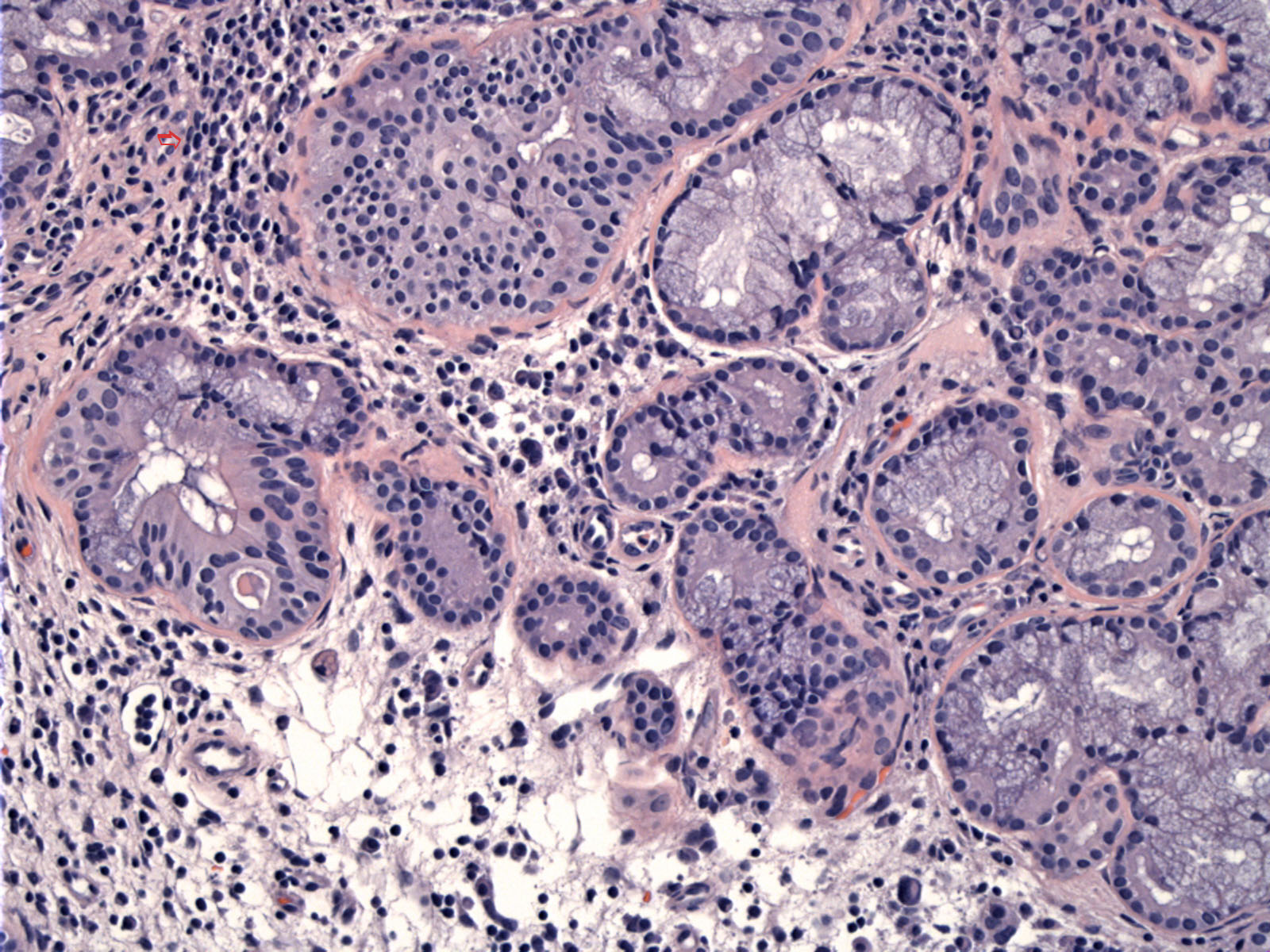

The condition is characterzied by a mixed inflammatory infiltrate (lymphocytes, plasma cells, eosinophils, neutrophils). Other features include squamous metaplasia, sermucinous glandular hyperplasia and basement membrane thickening (Rosai).
Normal respiratory epithelium to the right overlies a thickened basemement membrane (arrow). The seromucinous glands are surrounded by a chronic lymphoplasmacytic infiltrate.
Chronic sinusitis may be isolated to the nasal cavity (rhinitis) or the paranasal sinuses (sinuitis). When both the nasal cavity and paranasal sinuses are affected, the term rhinosinusitis is used.
Most cases of chronic sinusitis are due to acute sinusitis that either is untreated or does not respond to treatment. The etiology can be infectious (fungal, viral, bacterial) or noninfectious (allergy, cystic fibrosis, environmental pollutants). Mucous stagnation creates a rich media for the growth of pathogens (Brook).
Although the condition is rarely life threatening, complications can occur occasionally cause significant morbidity. For example, due to the proximity of the sinuses to the orbit and cranial cavity, 75% of orbital infections and up to 10% of intracranial infections related to sinusitis (Brook).
Brook I, et al. Chronic Sinusitis: eMedicine. Last updated on Feb 15 2012. Available at: emedicine.medscape.com/article/232791-overview
Rosai, J. Rosai and Ackerman's Surgical Pathology. 9th Ed. Philadelphia, PA: Elsevier; 2004: 306.